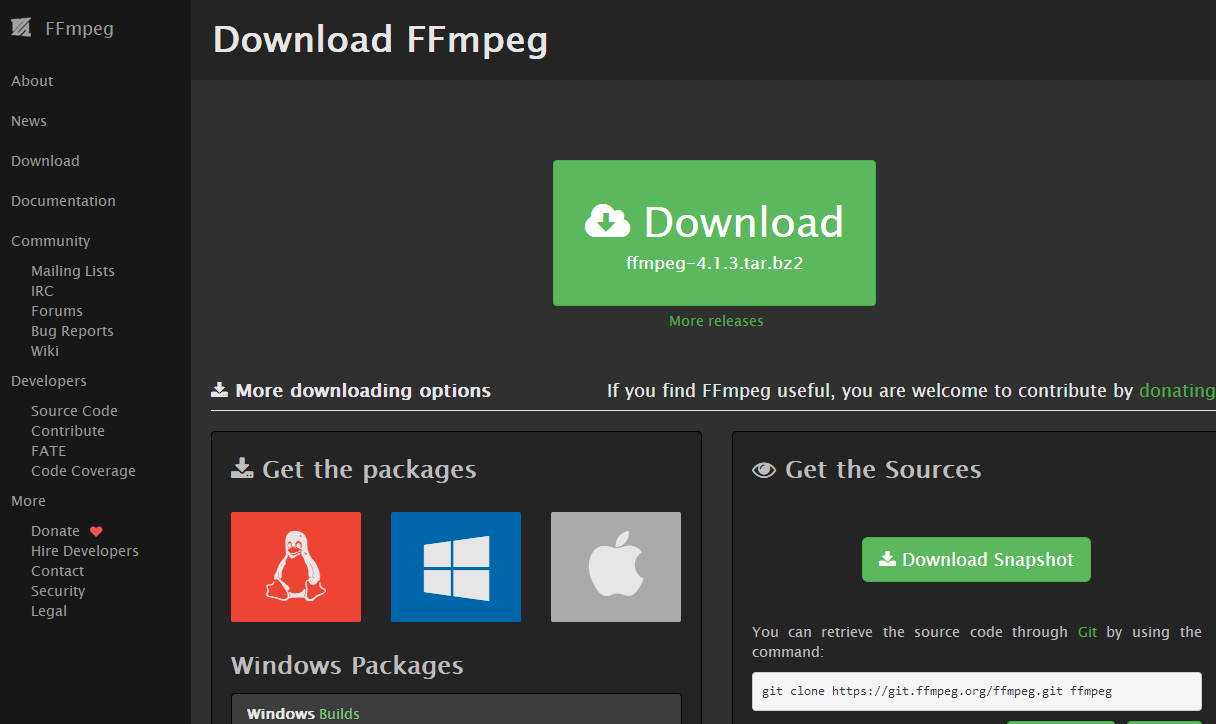
You can pass a local path of video(or a supported resource) to the input method: video = ffmpeg_streaming.input('/var/media/video.mp4') There are several ways to open a resource. Install the package via pip: pip install python-ffmpeg-video-streamingĪlternatively, add the dependency directly to your requirements.txt file: python-ffmpeg-video-streaming>=0.1įirst of all, you need to import the package in your code: import ffmpeg_streaming You will need both FFmpeg and FFProbe binaries to use it. To use this package, you need to install the FFmpeg. This version of the package is only compatible with Python 3.8 or higher. If you find any bugs in the library, please file an issue. In this version(>=v0.1.0) all codes are rewritten from scratch.Full Documentation is available describing all features and components.There are several options to open a file from a cloud and save files to clouds as well. Pip install -upgrade -r tests/requirements.This package uses the FFmpeg to package media content for online streaming such as DASH and HLS. # Either install the testing dependencies:

See the Conda install docs to get started with (mini)Conda.Īnd if you want to build from the absolute source (for development or testing): git clone PyAV If you want to use your existing FFmpeg, the source version of PyAV is on PyPI too: pip install av -no-binary avĪnother way of installing PyAV is via conda-forge: conda install av -c conda-forge You can install these wheels by running: pip install av Since release 8.0.0 binary wheels are provided on PyPI for Linux, Mac and Windows linked against a modern FFmpeg. Installationĭue to the complexity of the dependencies, PyAV is not always the easiest Python package to install from source. If the ffmpeg command does the job without you bending over backwards, PyAV is likely going to be more of a hindrance than a help.īut where you can't work without it, PyAV is a critical tool. This power does come with some responsibility as working with media is horrendously complicated and PyAV can't abstract it away or make all the best decisions for you. It exposes a few transformations of that data, and helps you get your data to/from other packages (e.g. PyAV is for direct and precise access to your media via containers, streams, packets, codecs, and frames. We aim to provide all of the power and control of the underlying library, but manage the gritty details as much as possible.

PyAV is a Pythonic binding for the FFmpeg libraries.


 0 kommentar(er)
0 kommentar(er)
